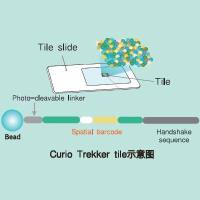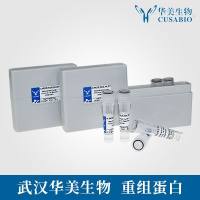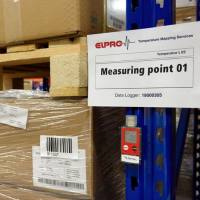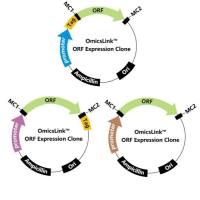Mapping Chromatin Interactions by Chromosome Conformation Capture
互联网
- Abstract
- Table of Contents
- Materials
- Figures
- Literature Cited
Abstract
Chromosome conformation capture (3C) is one of the only techniques that allows for analysis of an intermediate level of chromosome structure ranging from a few to hundreds of kilobases, a level most relevant for gene regulation. The 3C technique is used to detect physical interactions between sequence elements that are located on the same or on different chromosomes. For instance, physical interactions between distant enhancers and target genes can be measured. The 3C assay uses formaldehyde cross?linking to trap connections between chromatin segments that can, after a number of manipulations, be detected by PCR. This unit describes detailed protocols for performing 3C with yeast Saccharomyces cerevisiae and mammalian cells.
Keywords: DNA; chromatin; Saccharomyces cerevisiae; mammalian cells; interaction
Table of Contents
- Strategic Planning
- Basic Protocol 1: Generation of 3C Template from Intact Yeast Cells
- Basic Protocol 2: Generation of Control Template from Yeast Genomic DNA
- Basic Protocol 3: Generation of 3C Template from Mammalian Cells
- Basic Protocol 4: Generation of Control Template from Mammalian DNA
- Basic Protocol 5: Analysis of Interaction Frequencies Using 3C and Control Templates by Quantitative PCR
- Reagents and Solutions
- Commentary
- Literature Cited
- Figures
Materials
Basic Protocol 1: Generation of 3C Template from Intact Yeast Cells
Materials
Basic Protocol 2: Generation of Control Template from Yeast Genomic DNA
Materials
Basic Protocol 3: Generation of 3C Template from Mammalian Cells
Materials
Basic Protocol 4: Generation of Control Template from Mammalian DNA
Materials
Basic Protocol 5: Analysis of Interaction Frequencies Using 3C and Control Templates by Quantitative PCR
Materials
|
Figures
-

Figure 21.11.1 Schematic representation of the chromosome conformation capture (3C) technology. Cells are treated with formaldehyde to induce a cross‐link resulting in covalent linkage of interacting chromatin segments (indicated by the solid center oval). Cross‐linked chromatin is digested and ligated under dilute DNA concentrations. After reversal of cross‐links, ligation products can be detected by semi‐quantitative PCR (arrows indicate PCR primers). View Image -

Figure 21.11.2 Gel analysis of BAC DNA during generation of mammalian control template. A 1‐kb ladder is shown in lane 1 for size reference. Lane 2 is undigested BAC DNA, which runs on an agarose gel at slightly more than 10 kb. Lane 3 is digested BAC DNA, which is smear‐like in appearance. Lane 4 is ligated BAC DNA, which shows the disappearance of most of the smear‐like trail. Similar results are obtained for a Saccharomyces cerevisiae control template at the corresponding stages. View Image -

Figure 21.11.3 Titration and quantification of Saccharomyces cerevisiae 3C and control templates. The panels depict titration and analysis of a control template (left) and 3C template (right) using the same two primer pairs. The PCR products were run on agarose gels, PCR products were quantified, and the amount of PCR product was plotted versus DNA concentration in micrograms for the two primers pairs, one 11 kb apart in genomic distance (closed circles) and one 85 kb apart (open circles). For both primer pairs, the control template yields similar amounts of PCR product. The 3C template yields lower PCR products for the 85‐kb primer pair than for the 11‐kb primer pair. The linear range for PCR amplification for 3C and control templates is to the left of the dashed line. The DNA concentration for use in subsequent reactions should be in this range, but should also be high enough so that PCR products can be accurately quantified on an agarose gel. Similar results are obtained for a mammalian control template and 3C template. View Image -

Figure 21.11.4 Hypothetical results for a 3C experiment. (A ) A 3C dataset with no looping interaction between sequence elements x and y (black boxes). A number of interactions have been tested between sequence element x and sites located further away from it including sequence element y. Neighboring sites of x, those separated by a small genomic distance, exhibit high interaction frequencies. As genomic distance between sites increases, the interaction frequencies decrease progressively. A low interaction frequency is detected between sequence elements x and y. The exact shape of the curve is dependent on flexibility and the level of compaction of the chromatin fiber. (B ) In a 3C dataset with a looping interaction between sequence elements x and y, a local peak of interaction frequencies is observed. This peak (at ∼80 kb) shows that sequence elements x and y interact more frequently than expected, which is indicative of a looping interaction. View Image
Videos
Literature Cited
| Dekker, J. 2003. A closer look at long‐range chromosomal interactions. Trends Biochem. Sci. 28:277‐280. | |
| Dekker, J., Rippe, K., Dekker, M., and Kleckner, N. 2002. Capturing chromosome conformation. Science 295:1306‐1311. | |
| Luger, K., Mader, A.W., Richmond, R.K., Sargent, D.F., and Richmond, T.J. 1997. Crystal structure of the nucleosome core particle at 2.8 A resolution. Nature 389:251‐260. | |
| Spilianakis, C.G. and Flavell, R.A. 2004. Long‐range intrachromosomal interactions in the T helper type 2 cytokine locus. Nat. Immunol. 5:1017‐1027. | |
| Spilianakis, C.G., Lalioti, M.D., Town, T., Lee, G.R., and Flavell, R.A. 2005. Interchromosomal associations between alternatively expressed loci. Nature 435:637‐645. | |
| Tolhuis, B., Palstra, R.J., Splinter, E., Grosveld, F., and de Laat, W. 2002. Looping and interaction between hypersensitive sites in the active beta‐globin locus. Mol. Cell 10:1453‐1465. | |
| Vakoc, C., Letting, D.L., Gheldof, N., Sawado, T., Bender, M.A., Groudine, M., Weiss, M.J., Dekker, J., and Blobel, G.A. 2005. Proximity among distant regulatory elements at the beta‐globin locus requires GATA‐1 and FOG‐1. Mol. Cell 17:453‐462. | |
| Internet Resources | |
| http://bacpac.chori.org | |
| Website for information and to purchase BAC clones from various sources. |






